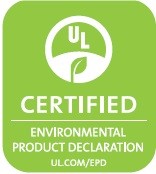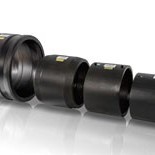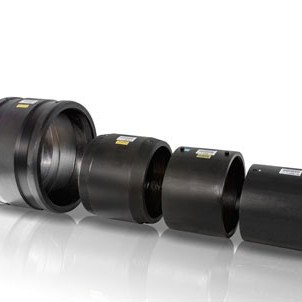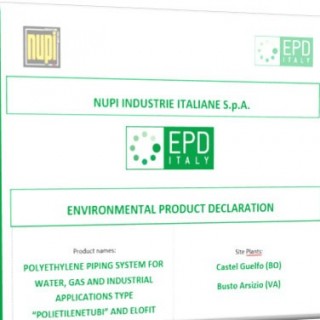NUPI AND ENVIRONMENTAL SUSTAINABILITY

NUPI Americas announces the completion of environmental product declaration (EPD) regarding the environmental sustainability of its ELOFIT product range.
In order to respond more effectively to the demand for products that comply with the most rigorous environmental standards, NUPI has obtained its second Environmental Product Declaration (EPD) for the ELOFIT system. This is an important achievement for NUPI Americas, as it increases the number of certifications related to its products and makes the corporate brands increasingly competitive in the global market while certifying the quality of NUPI products.
Obtaining the EPD Declaration is only the last step in a long journey that over time has seen investments grow to reinforce the green profile in an increasingly authoritative way, starting from the achievement of the important EN ISO 14001 certification.
Thanks to the high competence of our Research and Development team, the careful and scrupulous environmental management and the meticulous search for the best quality in the management of the system and of the products, it was possible to reach total control of the product processing phases and the production process.
NUPI has therefore been able to qualify its products at the highest level in different markets and for all final consumers, retailers, designers and professionals.
What is EPD?
EPD, also known as a Type III environmental declaration, in accordance with EN ISO 14125, is a declaration verified by an independent body, which communicates the environmental performances of the products throughout their life cycle in an objective and transparent way. Having an EPD allows professionals to choose products that meet specific sustainability criteria, necessary for the design of buildings/constructions from a Smart and Green Building point of view.
Benefits of an EPD:
- The producer can declare the environmental sustainability of its product.
- The designer can evaluate the environmental sustainability of the building/construction according to LCA methodology.
- The consumer can receive verified information about the environmental performance of a building/construction product, that are extracted and elaborated starting from EPD.
The Contents of an EPD
In NUPI ELOFIT EPD the environmental impacts assessed according to American standard were included. In US, United States Environmental Protection Agency EPA, EPA has developed TRACI, the Tool for the Reduction and Assessment of Chemical and other environmental Impacts, to assist in impact assessment for Sustainability Metrics, Life Cycle Assessment, Industrial Ecology, Process Design, and Pollution Prevention. Methodologies were developed specifically for the United States using input parameters consistent with US locations for the following impact categories.
Environmental impacts:
- climate change – Global warming air
- ozone depletion air
- acidification air
- eutrophication
- smog formation air
NUPI ELOFIT EPD includes also the following environmental parameters, assessed according to EN 15804:
Use of environmental resources and waste production:
- Consumption of fossil resources
- Consumption of renewable resources
- Use of secondary raw materials (recycling)
- Use of secondary renewable and non-renewable fuels
- Consumption of water resources
- Waste production (hazardous and non-hazardous)
Its contents are mainly aimed at industrial and commercial users of the product and allow to improve environmental communication between producers on the one hand (business to business), and distributors and consumers on the other (business to consumers).
Through a careful analysis and interpretation of the results obtained on its products, NUPI can:
• increase/optimize
end-of-life management, product recyclability, use of materials and processes with low environmental impact, optimizing packaging and distribution of the finished product, optimizing production processes by implementing technological solutions aimed at energy efficiency;
• reduce/minimize
use of toxic materials and/or substances, use of energy-intensive raw materials, waste production, consumption of energy carriers (water, fuel gas, electricity).
Advantages of a specific EPD – from the Cradle to the Grave
Obtaining a specific product EPD, such as the one obtained for POLIETILENETUBI and ELOFIT, rather than a category/sector EPD, allows obtaining the maximum score/credit in environmental sustainability protocols (such as LEED) that are nowadays very common in the building and construction sector.
Since the market interested in receiving the EPD of NUPI products is international, the EPDs obtained comply and will comply with EN 15804 and, in addition, will contain the TRACI indicators, required by the American market.
The ELOFIT EPD is the first specific product EPD of the from cradle to grave type for a polyethylene pipe and fitting system. The environmental impacts are therefore calculated from the extraction of the raw materials up to the end of the life of the product itself, passing through the use and maintenance phase and including possible scenarios of reuse, recovery and recycling.
The functional unit chosen is represented by 328 ft of POLIETILENETUBI underground pipes (DN 4”, SDR 17) and ELOFIT fittings for the distribution of underground fluids under pressure, both made of high-density polyethylene. A straight distribution line that starts from the distribution system and arrives directly to the building meter has been considered (including a flanged coupler and a threaded coupler at the ends and considering electrofusion joining of the pipe sticks).
Since the impact categories are multiple and wanting top focus on the most renowned in common parlance, i.e. on Global Warming (GWP) expressed in kg CO2eq. emitted in the atmosphere, it is possible to affirm that the environmental impact of NUPI ELOFIT piping system shows far lower values when compared to pipes made of traditional materials, in particular metallic materials. In this case, we shall consider 80% less if compared to a similar system made of carbon steel (ductile iron).
If we analyze instead what contributes the most to creating the impact of global warming, it is possible to affirm that the greatest impact can be attributed, first of all, to the consumption of the raw material used for the production of pipes and fittings (45%) and, secondly, to the underground installation of the piping itself (25%).
Standard EN 15804:2019 has undergone major changes following the goals set by the 2030 Agenda for sustainable development and the implementation of a circular economy vision in all sectors (design, production and services). To date, EPD including all modules relating to the life cycle with a from cradle to grave scenario, has become mandatory for the construction sector, with only a few exceptions. NUPI was a forerunner of this scheme and the ELOFIT EPD will therefore always be valid or at least in line with this vision.
International visibility
The EPD of ELOFIT, analyzed and validated by ICMQ, is now published on EpdItaly website and on Eco Platform website. Furthermore, as proof of its international value and thanks to the mutual recognition among Program Operators, it has also been recognized, approved and published by UL Environment (SPOT UL website).
The UL EPD certification mark indicates that UL has independently reviewed and certified the NUPI’s environmental impact disclosure that constitutes the EPD.
Download NUPI ELOFIT EPD on SPOT.
What is SPOT?
SPOT is a free online product database that contains more than 100,000 products. It can help design professionals identify sustainable products for green buildings during the design and specification phases. Furthermore, UL’s SPOT add-in for Revit, SketchUp, and AutoCAD is available for download.



